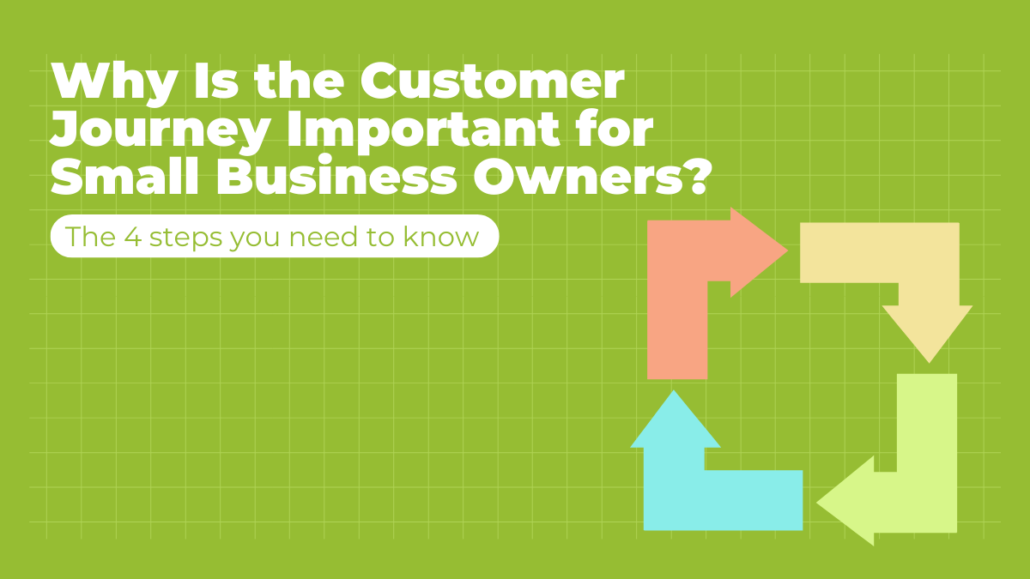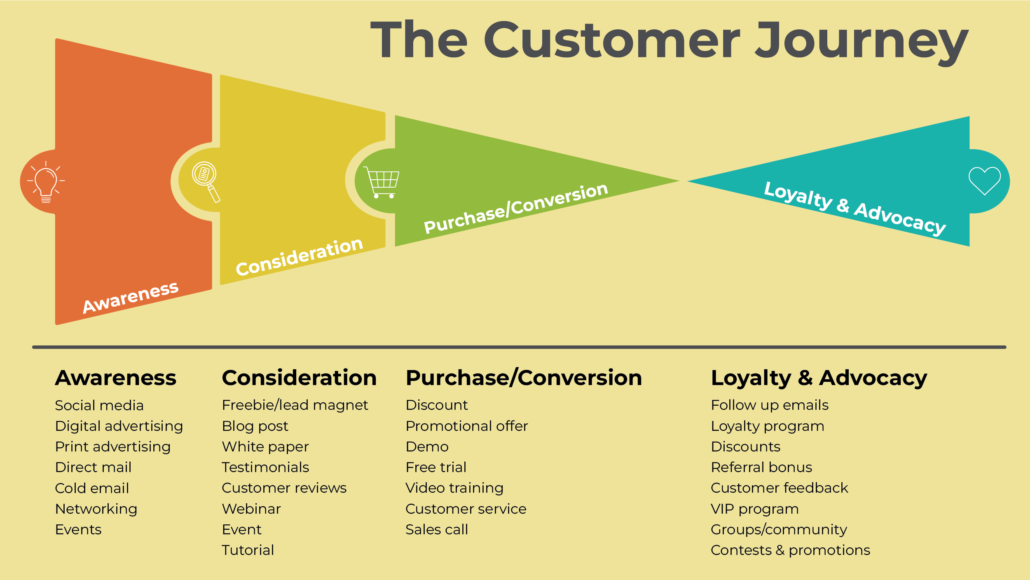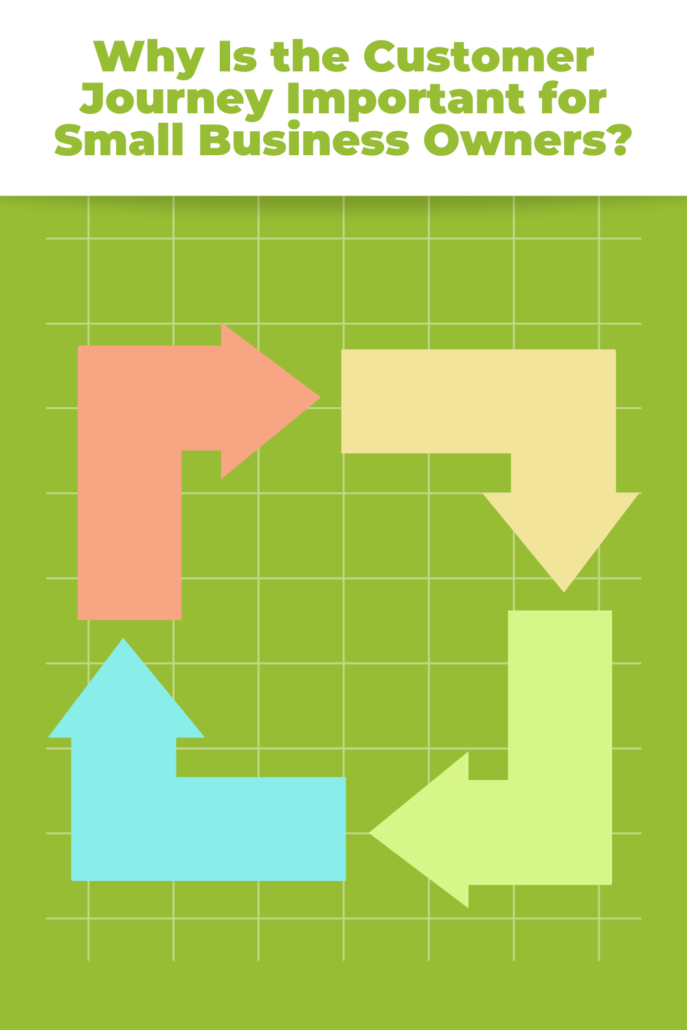Why Is the Customer Journey Important for Small Business Owners?
What’s a Customer Journey and Why Does It Matter?
Anytime you secure a new (or recurring) customer, how much do you think about how they arrived at that decision? Getting a sale is a well-deserved victory, to be sure. Yet, there’s great opportunity in paying attention to how those customers ended up coming to you—and how they decided to buy.
This is what’s known as the customer journey.
Now, if you’re thinking, “this is just one more thing I need to add to my never-ending list,” don’t worry. Understanding the customer journey isn’t some complicated matrix you need to absorb in order to understand your customers’ and prospects’ tendencies. In fact, with just a few simple steps, you can optimize your business and marketing efforts—and convert more customers as a result.
Here’s even better news: You may already be performing marketing activities along the customer journey and not even know it. Let’s take a realistic look at what the customer journey is, why it’s so important, and how you can incorporate it into your marketing strategy.
Customer Journey Stage 1: Awareness
Think of all the ways people can learn about you when they first become aware of your business. Perhaps you’re on various social media platforms, or they’ve found you through a search and landed on your website. You may have also done some paid advertising, whether on social media, paid search, or even print advertising (direct mail, print publications). Or maybe you met them at a networking event, offline or online.
Those are all awareness tactics. At the awareness stage, people are becoming more cognizant of your company and its offerings—even if they don’t intend to buy from you at that moment. With awareness, you’re really planting a seed in their minds. What follows is how you get that seed to grow.
Customer Journey Stage 2: Consideration
As customers and prospects engage with your company more, they start to conduct research and form an opinion. Is your product or service truly helpful to them? Is it something they can do without? You can reinforce a good opinion or try to sway a negative one—if you have knowledge of that sentiment.
In this consideration phase, you want to try and capture your potential customer’s contact info if possible—like opting them into your email newsletter, or attracting them with a freebie or lead magnet, for which they give you their email address. Once you’re in closer contact with them, you could send them a specific piece of content to foster their consideration. For example:
-
- blog post
- video tutorial
- webinar
- one-pager
- white paper
- case study
- customer testimonials
- online reviews
Or, you might point them to your FAQ page so any questions they have are able to be resolved right there in front of them.
No matter what tactic you use, it’s important to keep up with these nurture strategies. Otherwise, consideration might turn to abandonment—especially if your competition is really good at keeping in touch.
Customer Journey Stage 3: Purchase/Conversion
At some point, we hope that all of our followers and the people on our email list will get through the consideration phase and decide to make a purchase. They do this because they’ve really come to know, like, and trust you. You’ve provided helpful information and answered questions that arose. Now’s the time to get them to convert!
If prospects (or returning customers) are on the fence about your product or service, you could consider offering a discount or other promotional enticement at this stage. Maybe it’s a free educational course that’s available for a limited time, or a gift with purchase. Of course, you don’t want to give away the farm—but a little goodwill goes a long way to sway an undecided potential customer.
This is also a great place to offer a demo or a free trial of your product. You can also provide great video resources to help the customer understand your product or service in detail, to help them make the decision to purchase.
Best case scenario, someone does decide to make a purchase. Success, right? Yes—but your work is not done. The purchase phase of the customer journey continues. Immediately, it’s essential that you’re ensuring an excellent user experience (UX). If you’re an online seller, is your checkout process smooth? Can buyers get in touch with you quickly and easily? How soon can customers expect a confirmation?
Remember, if someone gets all this way and decides not to close the deal, it doesn’t mean they will abandon you forever. Keep up with your nurture efforts so you remain top of mind should that person change their mind.
Customer Journey Stage 4: Loyalty and Advocacy
Some marketing experts separate these two, but they are closely connected. You want customers to become repeat buyers, and you also want them to be vocal advocates for your brand. You can’t have the latter without the former.
Part of this involves all of the purchase activities mentioned above surrounding customer experience/user experience. Once a prospect becomes a customer, you don’t want to give them any reason to never return.
Loyalty and advocacy also involve follow-up communications. You might send out an email, in addition to the confirmation email, as an extra acknowledgement. Depending on the type of product or service you offer, you could offer loyalty programs or discounts. This is also a good opportunity to reach out for customer feedback. There are various platforms that deploy customer satisfaction surveys on your behalf—or, you and your team might prefer to connect with customers directly.
Once you know you have customers on your side, you can entertain ways to turn them into brand advocates (or, even better, brand evangelists). Some ideas include asking them to share their experiences on social media or holding exclusive events for your best, most vocal customers.
Another possible tactic is to create contests surrounding user-generated content (UGC). With this approach, you’re not only fostering strong customer relationships, you’re also garnering effective marketing material!
Reimagining the Sales Funnel
It is important to know that not every customer will follow this exact path to purchase. In fact, the “traditional” sales funnel—and thus the customer journey—was always thought of as a linear process. That is no longer the case.
If anything, it is circular and in constant motion. You might get someone to the consideration phase and then have to employ more awareness tactics to reel them back in. These “little loops” shouldn’t be disregarded, as they are a crucial part of the customer journey. They provide constant content touchpoints that (hopefully) tip a prospective customer towards your business.
Another thing to keep in mind is that sales cycles differ depending on the type of product or service you offer. Smaller B2C purchases could be made quickly, expediting the awareness-to-purchase path. Other buying decisions could take months.
Regardless of your company’s projected sales cycle length, one word applies: patience. Oftentimes, business owners think sales should occur much quicker than that decision actually takes. That means you have to give your marketing and sales efforts time to work. No matter how great your offering is, it’s unlikely you’ll send out an email or post on social media and get an immediate response. You wouldn’t expect a ring on the first date, would you?
Structure Begets Success
There’s so much value in applying customer journey activities to your marketing efforts. I’m willing to bet many of you are already doing this—maybe you just didn’t have a name for it.
Yet, by making a concerted effort to incorporate the characteristics of the customer journey into your marketing activities, it provides an element of structure. No more guesswork! You know exactly what to do at which touchpoint, as well as reassess the tactics that aren’t working—and reinforce the ones that are.
If you need some insight or advice on optimizing your company’s approach to the customer journey, or help creating some of the marketing materials mentioned above, I really hope you’ll connect with me. I’ve seen my clients make tremendous strides upon leveling up their efforts even by a fraction.
Stephanie Schwab
Latest posts by Stephanie Schwab (see all)
- Small Business Best Practices For Outsourcing Business and Marketing Activities - March 12, 2023
- Social Media and Live Events: Promoting Your Small Business - January 30, 2023
- Why Is the Customer Journey Important for Small Business Owners? - November 29, 2022
- Finding Your Brand Voice - July 27, 2020
- Business Social Media: Farming vs. Fishing - January 9, 2018




